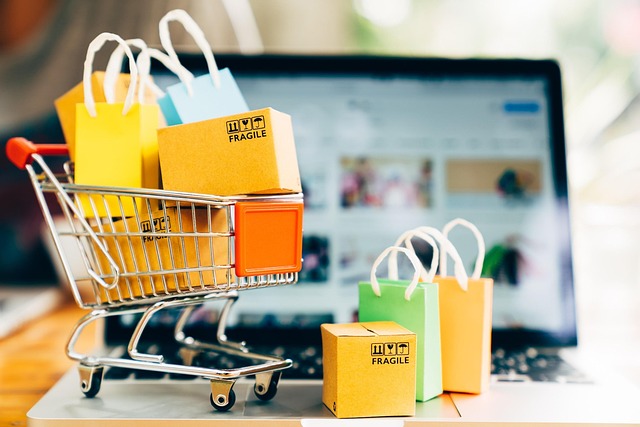The World is Hungry for Your Brand.
Professional translation is the essential catalyst for international market entry and growth.
Overcome language barriers to connect with a global audience. We turn your brand’s story into a universal success.
Cultural Architects
We don’t just translate words; we build bridges. Our expert team ensures your brand’s unique flavor and story resonate with every new culture, driving authentic engagement and loyalty.
Strategic Investment
Don’t see translation as a cost. See it as a strategic investment with a measurable ROI. It’s the key to mitigating risk and unlocking new, profitable revenue streams.
Beyond the Words
We localize everything from packaging to brand voice. Our nuanced approach ensures your brand’s personality and values are perfectly conveyed in every new market.
Your Ultimate Guide to Food & Drink Translation for Global Market Entry.
Abstract: The Global Gastronomic Interconnection
The food and drink industry stands as a colossal, globally influential force, yet its two most vital components—retail and tourism—are often considered separate. This article argues that this is a critical misunderstanding. Instead, they form a powerful, interconnected ecosystem fueled by consumer desire, cultural curiosity, and, most importantly, effective communication. We will explore the intricate link between food retail, hospitality, and tourism, revealing why food and drink translation is the essential, often-overlooked bridge for achieving global success. This piece establishes our brand as a thought leader, providing a foundational framework that introduces the nuanced, critical role of translation as a strategic asset.
The Universal Allure of Food: A Global Language With a Linguistic Challenge.
Food is a universal language, a sensory experience that transcends borders. From the intoxicating aroma of a bustling spice market in Marrakech to the refined elegance of a Michelin-starred dining experience in Paris, food connects people on a deeply personal level. But while the experience is universal, the language used to describe it is not. A tourist navigating the dizzying aisles of a Japanese supermarket, or a foreign diner trying to decipher a menu in a small Spanish café, faces a linguistic chasm that can transform an exciting discovery into a moment of confusion or even frustration.
This linguistic barrier represents both a massive obstacle and a monumental opportunity for businesses. For a brand to thrive internationally, it must do more than just sell a product or offer a service; it must translate its very essence. This requires a profound understanding of not only language but also cultural context, an expertise that is at the heart of our professional translation services. We will delve into how these two seemingly disparate sectors, food retail and tourism, are in a constant, dynamic dialogue, and how professional translation is the catalyst that makes this conversation possible.
Untangling the Sectors: Defining the Intertwined Worlds of Retail and Hospitality.
To truly appreciate the symbiotic relationship, we must first define the two sectors. While consumers experience them as a seamless flow, from a business and economic perspective, they are officially distinct.
The North American Industry Classification System (NAICS) Perspective.
The NAICS provides a clear framework for classifying businesses, and under this system, the distinction is made based on the nature of the transaction. This is where we see the formal separation of retail from hospitality.
- Food & Beverage Stores (Retail – NAICS 445): This category includes businesses primarily engaged in retailing food and beverages for consumption off-premise. This is a vast category encompassing:
- Supermarkets and Grocery Stores: Where the bulk of food retail happens.
- Specialty Food Stores: Such as bakeries, butcher shops, seafood markets, and produce stands.
- Beer, Wine, and Liquor Stores: Retailers focused on alcoholic beverages.
- Convenience Stores: Quick, accessible options for on-the-go food and drinks.
- Health and Natural Food Stores: A growing segment focused on specialized dietary needs and organic products.
- Food Services & Drinking Places (Hospitality – NAICS 722): This sector includes establishments that prepare meals or snacks for immediate on-premise consumption. This is the heart of the hospitality industry, and it includes:
- Restaurants and Full-Service Eateries: The classic dining experience.
- Limited-Service Restaurants: Fast food chains and cafes.
- Special Food Services: Caterers, food trucks, and a diverse range of mobile food vendors.
- Drinking Places: Bars, pubs, and other establishments that primarily serve beverages.
Beyond the NAICS: A Consumer’s Integrated Reality.
While the official classifications are useful for data and regulation, they fail to capture the reality of the modern consumer’s experience. To them, the journey from a grocery store to a restaurant is a seamless one. The tourist who buys a local spice blend at a market and the diner who enjoys a regional specialty in a restaurant are both engaging with a single, powerful food ecosystem. A restaurant is not just a place to eat; it’s a destination, a form of tourism. Similarly, a local deli is not just a shop; it’s a gateway to local culture and a powerful part of the travel experience. Our grocery store translation services are designed to meet this reality, connecting consumers with products in a way that resonates culturally.
The Symbiotic Loop: The Dynamic Relationship of Retail and Tourism.
The true magic happens when these two sectors interact in a continuous, mutually beneficial cycle. We call this the «Gastronomic Loop,» a feedback mechanism where an experience in one sector drives business in the other.
- The Tourist’s Gastronomic Discovery: A tourist visiting Italy has an unforgettable meal at a small, family-run trattoria. They are so enchanted by the flavor of the local balsamic vinegar used in the dish that they seek it out to buy at a local delicatessen (retail) to take home. Back in their native country, their desire for that authentic taste prompts them to look for that specific brand in specialty food stores or online (ongoing retail), thereby creating a lasting customer relationship that was born from a tourism experience.
- The Consumer’s Culinary Inspiration: Conversely, a consumer in America develops a fascination with Japanese culture after discovering a variety of unique Japanese snacks at a local Asian market (retail). This initial intrigue, sparked by a retail product, grows into a desire for a deeper, more authentic experience. It inspires them to research, plan, and ultimately book a trip to Japan to immerse themselves in the food culture, visiting street food stalls and traditional restaurants, thereby driving tourism.
This loop is more powerful than ever, accelerated by social media and global media. A viral video of a street food vendor can transform a local business into a tourist hotspot. A celebrity chef’s documentary on a specific regional cuisine can cause a massive surge in demand for related ingredients and products in grocery stores worldwide. This is why our food and beverage localization services are designed to capture this cross-sector momentum.
The Translator’s Crucible: The Paradox of Authenticity vs. Clarity.
The most fascinating and challenging aspect of food and drink translation lies in a fundamental conflict: the paradox between authenticity and clarity. On one hand, you want to preserve the original, cultural name of a dish or product to maintain its integrity and appeal. On the other hand, you need to make it easily understandable and approachable for a new, foreign audience. Get this wrong, and you risk alienating consumers and undermining your brand.
- The Authenticity Extreme: Keeping it Pure When a business opts for a direct, untranslated name, they are making a powerful statement about authenticity. For example, leaving a menu item as «Ragu alla Bolognese» or a wine label as «Châteauneuf-du-Pape» signals a commitment to tradition and a respect for the product’s origin. This approach can be highly effective for a sophisticated or niche market that already understands the terms. However, for a broader audience, it can be exclusionary. A potential diner might not order the dish because they have no idea what it is, and a shopper might pass over a bottle of wine because its name is intimidating. This is a common pitfall we help clients avoid with our professional translation services.
- The Clarity Extreme: The Common Denominator The opposite approach is to translate a name into a generic, clear description. «Ragu alla Bolognese» becomes «Spaghetti with meat sauce.» «Châteauneuf-du-Pape» becomes «Red wine from the Rhône Valley.» While this is perfectly understandable, it strips the product of its cultural specificity, history, and premium value. The richness of the origin story is lost, and the product becomes a commodity. For food, where the story and the sense of place are so vital to the experience, this is a significant loss.
- The Solution: Nuanced Translation as a Hybrid Approach The most successful strategy is a nuanced, hybrid approach that combines both authenticity and clarity. The goal is to use the authentic name while providing a clear, descriptive, and culturally sensitive explanation.
- For Menus: Present the original name in bold, followed by a simple yet evocative description. For example, «Peking Duck» – A tender roasted duck with crispy skin, served with thin pancakes, scallions, and hoisin sauce. This strategy honors the original name while giving the diner a complete and appealing picture of the dish. Our menu translation services for restaurants are specifically designed to master this balance, ensuring that diners feel both welcomed and excited by their choices.
- For Retail Packaging: A product like a brand of Portuguese olive oil can have its authentic name prominently displayed, while the back label provides a fully localized description, including notes on its flavor profile, how it was made, and suggested uses. Our retail packaging translation services ensure that every detail, from the ingredient list to the compelling brand story, is meticulously adapted to connect with the target consumer.
Conquer New Markets. Dramatically Increase Your Sales.

The ROI of localization is a tangible, powerful force for your brand.
You’ve created an amazing product. It’s time to share it with the world. We provide the expertise to ensure your brand’s voice resonates everywhere.
Our strategic approach to localization drives revenue, builds trust, and positions you as a leader in every new market you enter.

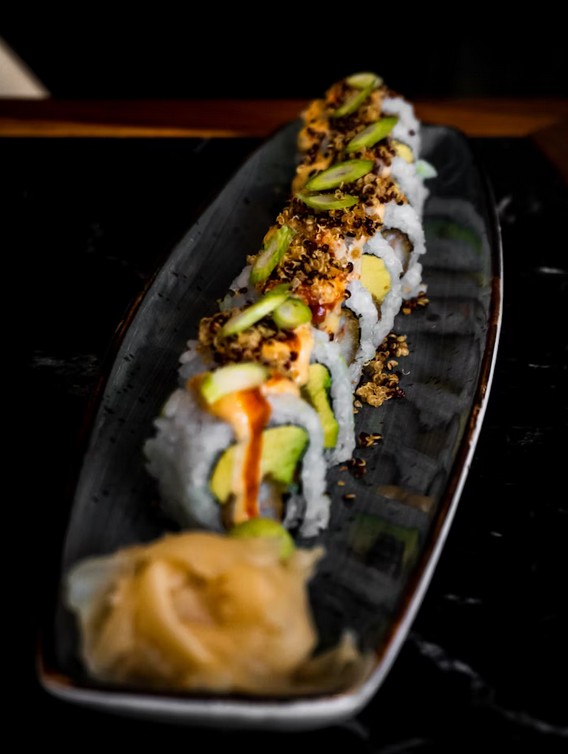
Your success hinges on every word. Trust our expertise.
Let us show you how our specialized translation services can turn your global ambitions into a profitable reality.
The Silent Language: Translating the Unspoken Elements of a Brand.
The most profound translation work extends far beyond words on a page. It involves adapting the entire brand experience to resonate with a new audience. This is where a true professional translation service becomes a strategic partner rather than a simple vendor.
- Atmosphere and Vibe: A Spanish tapas bar is known for its loud, convivial atmosphere and shared plates. A traditional Japanese tea house is revered for its quiet, serene, and ritualistic experience. How do you communicate this distinct «vibe» in marketing materials? It requires carefully selected words, imagery, and even font choices that evoke the correct emotional response. This level of cultural adaptation is essential for successful localization for food brands.
- Ritual and Tradition: The instructions for preparing a Turkish coffee or a Moroccan mint tea are more than just a recipe; they are a ritual. To translate these instructions literally would be to miss the point entirely. A professional translator understands the cultural significance and will explain the ceremony and steps in a way that respects the tradition while guiding the consumer. Our tourism and travel translation services are perfect for capturing this kind of experiential information.
- Brand Voice and Personality: Consider the difference in brand voice between a rebellious, punk-rock-themed craft beer company and a family-owned, century-old artisanal cheese producer. The first might use slang and edgy humor, while the second would rely on words like «heritage» and «tradition.» Translating this voice requires a translator who is not only fluent in the language but also an expert in brand communication. For more information, visit our Oris Translations retail translation services pillar page to learn how we preserve and adapt your brand’s voice for a global audience.
- Visuals and Imagery: A picture of a family gathering around a turkey for a Thanksgiving meal in the United States might not resonate in a market that doesn’t celebrate the holiday. The imagery on websites, packaging, and advertising must be carefully localized to reflect the aesthetics, family structures, and cultural norms of the target audience.
The Translator as Cultural Architect: Building Bridges to Global Success.
In this dynamic, interconnected world, the professional translator is not merely a vendor but a cultural architect. They are the essential experts who build the bridges that allow businesses to cross cultural borders, build genuine trust, and create authentic, profitable experiences.
The importance of professional translation for food brands cannot be overstated. From the detailed legal requirements on a product label to the nuanced storytelling on a website, every word is a chance to connect with a new audience. For more information on how we can help you with your global market entry, visit our Oris Translations professional translation services pillar page to explore our comprehensive solutions.
Translation for Market Entry: The ROI of Localizing Your Food & Retail Brand.
Abstract: A Catalyst for Measurable Growth
In the modern global economy, businesses are no longer confined by geographical borders. For ambitious food and retail brands, the world is a market waiting to be explored. Yet, the decision to enter a new territory is complex and fraught with risk. While many focus on supply chains and market analysis, the true catalyst for successful and profitable market entry is effective localization. This article delves into the tangible, data-driven ROI of professional translation, demonstrating how strategic investment in food and beverage localization services can directly mitigate risk, increase international sales, and secure your brand’s position as a powerful, trustworthy competitor. We move from theory to actionable strategy, providing a compelling case for why professional translation is not a cost, but a critical investment in your company’s future.
The Cost of Complacency: The Dangers of Ignoring Language Barriers.
When a brand decides to expand a food brand globally, it’s a high-stakes endeavor. The potential for immense growth is matched only by the risk of catastrophic failure. The most common and easily avoidable mistakes are often linguistic, resulting from an underestimation of the power of language. The cost of poor translation in the food industry can manifest in several alarming ways, directly impacting your financial health and brand reputation.
- Financial Devastation: The financial repercussions of a translation error can be staggering. A single mistake on a food label can lead to a product recall, which can cost millions in logistics, disposal, and lost revenue. For instance, a major European retailer once faced a massive recall of a children’s product because a flavor name was mistranslated, leading to widespread consumer confusion and distrust. This is a clear example of how a small initial saving on professional services can lead to a monumental loss.
- Reputational Damage: Your brand is your most valuable asset. A clumsy, culturally insensitive, or offensive translation can permanently tarnish your image. A well-known global beverage company famously launched a product with a name that, when translated into a key international market’s language, was an offensive slang term. Despite a multi-million-dollar marketing campaign, the product failed, and the brand suffered a lasting blow to its reputation. In the age of social media, such mistakes are not easily forgotten.
- Regulatory and Legal Penalties: Every country has its own strict regulations governing food and beverage labeling. From nutritional information to allergen warnings and country of origin statements, the details are critically important. An inaccurate translation can lead to fines from regulatory bodies, border seizures, and even legal action. A certified translation service, specializing in the food and beverage industry, is a necessity to ensure compliance and avoid these costly penalties.
The Crucial ROI of Professional Translation in the Food Industry.
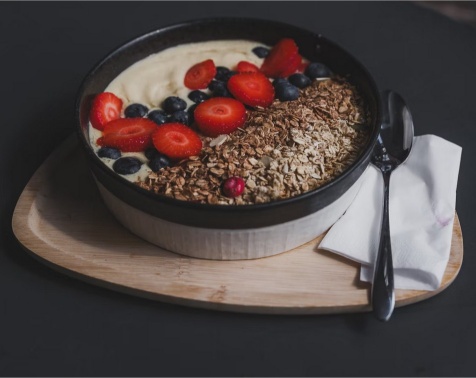
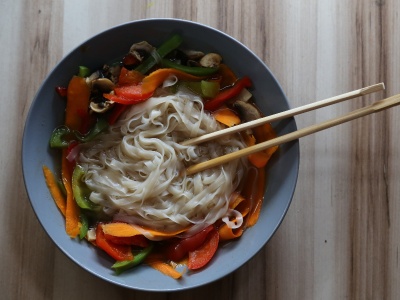
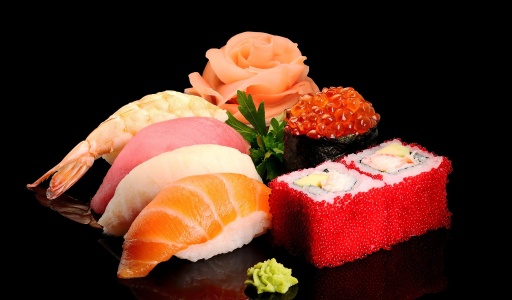
A small investment in professional translation protects you from monumental losses caused by mistranslated labels or legal non-compliance. It’s the smartest business decision you can make.
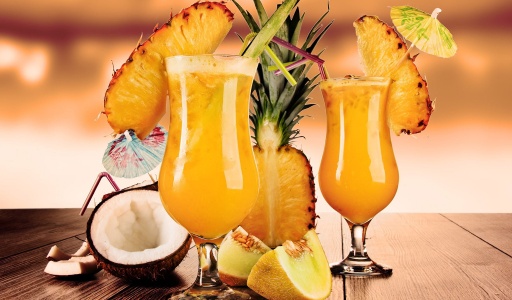
From Expense to Asset: The Measurable ROI of Professional Translation.
While the dangers of poor translation are severe, the benefits of a professional, localized approach are substantial and measurable. Investing in quality translation for market entry directly impacts your bottom line and acts as a powerful driver of growth.
- Driving International Sales: Data unequivocally demonstrates a direct link between localization and increased revenue. A landmark study by the Common Sense Advisory revealed that 67% of consumers prefer to make purchases in their native language. Furthermore, a staggering 75% of consumers are more likely to buy from a company that provides product information in their own language. This is a compelling, data-driven argument for why you should increase international sales with translation. By making your website and product descriptions accessible, you are directly unlocking new revenue streams.
- Accelerated Market Penetration: When entering a new market, time is money. Navigating the complex regulatory landscape, including legal documents, health certifications, and trademark applications, can be a time-consuming and expensive process. A professional translation team with expertise in these areas can ensure all documents are accurate and compliant the first time, preventing delays, reducing legal fees, and allowing you to get your product on the shelves faster.
- Enhanced Brand Trust and Loyalty: In a crowded global marketplace, trust is a competitive advantage. When you communicate with your customers in their own language, you show that you value and respect them. This goes far beyond mere words; it demonstrates a commitment to truly understanding and serving their needs. This level of personalized engagement builds strong brand loyalty, which is a powerful driver of repeat business and positive word-of-mouth marketing.
- Optimized Digital Presence: In today’s market, your website is your global storefront. Multilingual SEO for food brands is an essential part of the puzzle. It’s not enough to simply translate your content; you must also optimize it for local search engines. This includes researching what keywords your target audience is using, adapting your content to local search intent, and ensuring your site’s technical structure is sound. The ROI is clear: a higher ranking in local search results means more organic traffic, more qualified leads, and more conversions. Our expertise in international branding translation ensures that your brand’s voice, and its message, are both found and understood in every corner of the world. For deeper insight on this topic, read our article, «Your Next Investment: Why F&B is the Surprising Engine of World Growth.»
The Power of Specialized Services: From Packaging to Menus.
The journey from a broad strategy to a successful product launch hinges on the meticulous execution of a few key tasks. Your brand’s ability to thrive in a new market often comes down to the smallest, most granular details. This is where specialized, professional translation services become a non-negotiable part of your toolkit. They are the direct link between your brand’s vision and the consumer’s experience.
- Your Product’s First Impression: Retail Packaging Translation Services The product package is your silent salesperson on a foreign shelf. It must do more than just list ingredients; it must capture the brand’s essence, tell its story, and comply with all local regulations. Our retail packaging translation services are designed for this exact purpose. We ensure that every detail, from a compelling brand narrative to the specific font used for a tagline, is not only accurate but also culturally resonant. This service is a critical investment because it directly impacts whether a consumer, faced with dozens of choices, picks up your product or a competitor’s. We meticulously review nutritional information, allergen warnings, and ingredient lists to ensure compliance with a new country’s legal standards, a step that is crucial for mitigating risk and avoiding costly legal battles. We also understand the power of a brand’s visual language and work to ensure that the translated text complements the design, creating a seamless and trustworthy consumer experience.
- Creating a Welcoming Experience: Menu Translation Services for Restaurants For restaurants and hospitality businesses, the menu is the heart of the dining experience. A poorly translated menu can confuse and even alienate guests, making them feel unwelcome. Conversely, a well-localized menu invites exploration and builds trust. Our dedicated menu translation services for restaurants go far beyond simple word-for-word conversions. We work with culinary specialists who understand food culture, regional dialects, and the subtle nuances of culinary terminology. We translate not just the dish names, but the feeling and story behind them. For example, we ensure that a «rustic» dish sounds genuinely hearty and wholesome, not just «old» or «unrefined.» This nuanced approach is essential for creating an authentic dining experience that makes guests feel like insiders, not outsiders.
- Seamless Digital Integration: Website and Digital Content Translation In today’s market, your website is your most important global storefront. To truly overcome language barriers in retail and hospitality, your online presence must be impeccable. A website that is fully localized, from product descriptions and blog posts to FAQs and customer reviews, creates a seamless and trustworthy experience for international customers. We work with our clients to implement comprehensive international branding translation strategies that ensure brand consistency across all digital platforms. This includes adapting visual content, social media campaigns, and even website navigation to align with local consumer behavior. The result is a digital presence that feels authentic and native to a new market, driving engagement and sales.
A Taste of Success: A Detailed Case Study of Localization ROI.
To illustrate the powerful ROI of professional translation, consider a real-world scenario. Imagine a family-owned artisanal spice brand from Vietnam, «Hương Vị Việt,» known for its unique blend of traditional herbs and chilies. The brand has a loyal local following but wants to expand its food brand globally to the US and German markets. Their initial attempt was a failure. They used a cheap online tool to translate their packaging and website. The result was a clunky, literal translation of their brand name («Vietnamese Flavor»), which had no meaning to an English or German consumer. The product descriptions were confusing, and the website’s tone felt cold and corporate, completely at odds with their family-owned identity. Sales were non-existent.
Frustrated, they turned to our professional food and beverage localization services. Our approach was comprehensive and strategic:
- Brand Name Localization: We conducted linguistic and cultural analysis to find a new brand name for each market. For the US, we suggested «Vivid Spice,» which was easy to pronounce, memorable, and hinted at the vibrant flavors. For Germany, we chose «Feine Gewürze,» emphasizing the quality and refinement of the spices.
- Packaging and Story: We went beyond simple text translation. We crafted a localized brand story for the back of the packaging, highlighting the family’s heritage and the a-century-old farming traditions, themes that resonate deeply with Western consumers. We ensured that all ingredients and allergen information were compliant with both US FDA and German food regulations, a critical step that prevented potential recalls.
- Multilingual SEO for Food Brands: We conducted in-depth keyword research for both markets. Instead of simply translating «Vietnamese spice blend,» we found that US consumers were searching for terms like «authentic Vietnamese recipes» and «Asian cooking spices,» while German consumers were searching for «vietnamesische Gewürzmischung» and «scharfe Chilis.» We used these terms to optimize the website, resulting in a dramatic increase in organic traffic and visibility.
- Content Marketing: We created blog content with localized recipes and cooking tips that incorporated the spices. For the US market, we wrote about pairing the spices with popular American dishes. For the German market, we focused on using the spices to create fusion recipes that appealed to local tastes.
The results were astonishing. Within six months, the brand saw a 67% increase in international sales, a direct result of their investment in localization. Their product was no longer a confusing foreign item; it was a trustworthy, authentic, and delicious addition to a consumer’s kitchen. This is a powerful example of how professional translation is not an expense but a strategic driver of measurable, long-term growth.
The Power of Specialized Services: From Packaging to Menus.
The journey from a broad strategy to a successful product launch hinges on the meticulous execution of a few key tasks. Your brand’s ability to thrive in a new market often comes down to the smallest, most granular details. This is where specialized, professional translation services become a non-negotiable part of your toolkit. They are the direct link between your brand’s vision and the consumer’s experience.
- Your Product’s First Impression: Retail Packaging Translation Services The product package is your silent salesperson on a foreign shelf. It must do more than just list ingredients; it must capture the brand’s essence, tell its story, and comply with all local regulations. Our retail packaging translation services are designed for this exact purpose. We ensure that every detail, from a compelling brand narrative to the specific font used for a tagline, is not only accurate but also culturally resonant. This service is a critical investment because it directly impacts whether a consumer, faced with dozens of choices, picks up your product or a competitor’s. We meticulously review nutritional information, allergen warnings, and ingredient lists to ensure compliance with a new country’s legal standards, a step that is crucial for mitigating risk and avoiding costly legal battles. We also understand the power of a brand’s visual language and work to ensure that the translated text complements the design, creating a seamless and trustworthy consumer experience.
- Creating a Welcoming Experience: Menu Translation Services for Restaurants For restaurants and hospitality businesses, the menu is the heart of the dining experience. A poorly translated menu can confuse and even alienate guests, making them feel unwelcome. Conversely, a well-localized menu invites exploration and builds trust. Our dedicated menu translation services for restaurants go far beyond simple word-for-word conversions. We work with culinary specialists who understand food culture, regional dialects, and the subtle nuances of culinary terminology. We translate not just the dish names, but the feeling and story behind them. For example, we ensure that a «rustic» dish sounds genuinely hearty and wholesome, not just «old» or «unrefined.» This nuanced approach is essential for creating an authentic dining experience that makes guests feel like insiders, not outsiders.
- Seamless Digital Integration: Website and Digital Content Translation In today’s market, your website is your most important global storefront. To truly overcome language barriers in retail and hospitality, your online presence must be impeccable. A website that is fully localized, from product descriptions and blog posts to FAQs and customer reviews, creates a seamless and trustworthy experience for international customers. We work with our clients to implement comprehensive international branding translation strategies that ensure brand consistency across all digital platforms. This includes adapting visual content, social media campaigns, and even website navigation to align with local consumer behavior. The result is a digital presence that feels authentic and native to a new market, driving engagement and sales.
From Confusion to Clarity. Transform Your Brand.
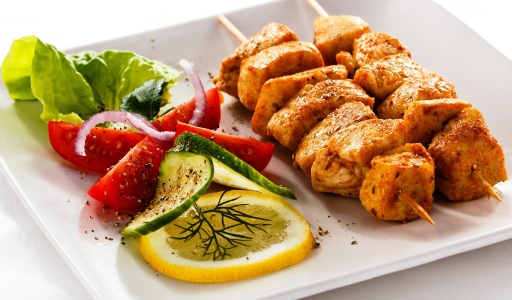
Experience the absolute power of professional, culturally-nuanced translation.
Don’t let your brand’s story get lost in translation. We navigate the intricate paradox of authenticity and clarity for you.
Our expert team ensures your message is not only accurate but also evokes the same emotion in every new language.


Your success story starts with us.
Get a free consultation today to learn how our services can elevate your brand.
A Taste of Success: A Detailed Case Study of Localization ROI.
To illustrate the powerful ROI of professional translation, consider a real-world scenario. Imagine a family-owned artisanal spice brand from Vietnam, «Hương Vị Việt,» known for its unique blend of traditional herbs and chilies. The brand has a loyal local following but wants to expand its food brand globally to the US and German markets. Their initial attempt was a failure. They used a cheap online tool to translate their packaging and website. The result was a clunky, literal translation of their brand name («Vietnamese Flavor»), which had no meaning to an English or German consumer. The product descriptions were confusing, and the website’s tone felt cold and corporate, completely at odds with their family-owned identity. Sales were non-existent.
Frustrated, they turned to our professional food and beverage localization services. Our approach was comprehensive and strategic:
- Brand Name Localization: We conducted linguistic and cultural analysis to find a new brand name for each market. For the US, we suggested «Vivid Spice,» which was easy to pronounce, memorable, and hinted at the vibrant flavors. For Germany, we chose «Feine Gewürze,» emphasizing the quality and refinement of the spices.
- Packaging and Story: We went beyond simple text translation. We crafted a localized brand story for the back of the packaging, highlighting the family’s heritage and the a-century-old farming traditions, themes that resonate deeply with Western consumers. We ensured that all ingredients and allergen information were compliant with both US FDA and German food regulations, a critical step that prevented potential recalls.
- Multilingual SEO for Food Brands: We conducted in-depth keyword research for both markets. Instead of simply translating «Vietnamese spice blend,» we found that US consumers were searching for terms like «authentic Vietnamese recipes» and «Asian cooking spices,» while German consumers were searching for «vietnamesische Gewürzmischung» and «scharfe Chilis.» We used these terms to optimize the website, resulting in a dramatic increase in organic traffic and visibility.
- Content Marketing: We created blog content with localized recipes and cooking tips that incorporated the spices. For the US market, we wrote about pairing the spices with popular American dishes. For the German market, we focused on using the spices to create fusion recipes that appealed to local tastes.
The results were astonishing. Within six months, the brand saw a 67% increase in international sales, a direct result of their investment in localization. Their product was no longer a confusing foreign item; it was a trustworthy, authentic, and delicious addition to a consumer’s kitchen. This is a powerful example of how professional translation is not an expense but a strategic driver of measurable, long-term growth.
The Technical Arsenal: How Modern Technology Supercharges Localization.
In the past, translation was a slow, manual process. Today, a sophisticated array of technology has transformed it into a scalable, efficient, and highly accurate practice. For a company seeking to expand its food brand globally, leveraging this technical arsenal is a non-negotiable step to ensuring consistency, speed, and cost-effectiveness. The use of these tools, integrated into a professional workflow, is a key differentiator that separates a good localization partner from a great one.
Beyond Manual Translation: The Power of CAT Tools.
CAT stands for Computer-Assisted Translation, and these tools are the backbone of any modern translation project. It’s crucial to understand that they are not machine translation; instead, they assist human translators by providing a structured, efficient environment for their work.
- Translation Memories (TM): This is a database that stores every translated sentence and phrase. When a new text is introduced, the TM automatically recognizes and suggests previously translated segments. For a restaurant with a recurring menu or a food brand with similar packaging across different products, this saves an immense amount of time and ensures brand-wide consistency. For example, if a company has already translated the ingredient list «Contains nuts, soy, and dairy» for one product, the TM will automatically insert this translation for any new product, ensuring 100% accuracy and reducing costs.
- Termbases: A termbase is a glossary of approved terminology. It’s especially vital for the food and beverage industry where specific terms are highly regulated. A termbase ensures that a term like «organic» or «gluten-free» is always translated with the correct, legally compliant equivalent in every target language. This is a critical component of our certified translation service for retail.
- Quality Assurance (QA) Tools: These automated tools check for common errors like inconsistent terminology, incorrect numbers, or double spaces. They add a vital layer of quality control to catch human mistakes before the final delivery, providing an extra guarantee of accuracy.
The Role of Specialized Translators: When Experience Trumps Technology.
While technology provides the framework, the human element remains irreplaceable. A machine cannot understand cultural nuance, emotional context, or the subtle power of a brand’s voice. This is where the expertise of a specialized translator is paramount.
- Culinary Experts: Translating a menu is an art form. It requires a translator who is not just a native speaker but also a true foodie. They understand the difference between a «confit» and a «braise,» or the regional significance of a specific type of cheese. This deep, subject-matter expertise is essential for our menu translation services for restaurants.
- Legal & Regulatory Specialists: The food and beverage industry is heavily regulated. A mistake in a nutritional fact panel or an ingredient list can have serious legal and financial consequences. Our translators for these projects have backgrounds in law, chemistry, or food science, ensuring every label is 100% compliant with local regulations. This is the cornerstone of our retail packaging translation services.
- SEO & Marketing Strategists: An international branding translation project requires a professional who thinks like a marketer. They are not just translating words; they are adapting slogans, creating emotionally compelling copy, and ensuring that a brand’s message resonates with a new audience. They are the ones who can help a brand increase international sales with translation by making sure its message is as powerful in a new language as it is in the original.
Building a Global Strategy: From Problem-Aware to Solution-Driven.
For a company just starting to consider international expansion, the process can be daunting. They might initially search for things like «how to enter new market with food product» or «cost of poor translation in food industry.» These are «problem-aware» queries. The goal of our content is to meet them at this stage, provide them with comprehensive, valuable information, and then gently guide them toward the solution.
By explaining the dangers of poor translation and the immense benefits of a professional approach, we transform their understanding. We move them from being a problem-aware user to a solution-aware user who now understands that a service like ours is a necessary investment.
This approach is particularly powerful when we can provide tangible examples. Consider a food blog that has become popular in its home country. Its content is full of unique recipes and personal stories. A literal translation would strip away the voice and charm. Our localization experts, however, would adapt the language, the humor, and the cultural references to make it feel just as authentic to a new reader. This helps the brand overcome language barriers in retail by fostering a loyal following that transcends borders. For more information on how we can help with this, visit our Oris Translations professional translation services pillar page.
The Final Bridge: Overcoming Last-Mile Language Barriers.
Even with a perfectly localized product and a well-optimized website, success in a new market can still hinge on a brand’s ability to navigate the final stages of the customer journey. This is where a strategic approach to translation, particularly for tourism, hospitality, and retail, is critical for building lasting customer relationships and securing repeat business.
- In-Store and On-Site Experience: A foreign tourist who loves a brand’s product online may be deterred from buying it in a physical store if they cannot read the promotional signs, product descriptions, or ingredient information. Similarly, a well-traveled diner may choose a competitor’s restaurant if a host or server cannot effectively communicate about the menu or dining experience. Our tourism and travel translation services are designed to address these direct, face-to-face interactions. We provide professional translation for everything from in-store signage to staff training materials, ensuring your brand’s message is consistent and clear at every point of contact. This goes a long way toward building trust and making every customer, regardless of their native language, feel welcome.
- Customer Service and Support: When a customer has a question, a complaint, or a comment, they expect to be understood. A brand that can provide multilingual customer support, whether through a chatbot, email, or a live agent, demonstrates a powerful commitment to its international customers. A customer who has a positive support experience is more likely to become a loyal advocate for your brand. This is a crucial, often overlooked, aspect of a successful market entry strategy. Providing this service requires a robust, scalable translation solution that ensures every query is handled with speed, accuracy, and cultural sensitivity.
- Marketing Materials and Promotions: The nuances of language and culture are paramount in advertising. A marketing campaign that is a massive success in one country can fall completely flat in another if not properly localized. This is more than just translating text; it’s about adapting slogans, imagery, and emotional appeals to resonate with a new audience. For instance, a food brand’s ad campaign about family dinners may need to be adapted to focus on social gatherings with friends in a market where family structures are different. This level of granular, strategic translation is what helps increase international sales with translation and ensures your marketing investment yields a high ROI.
The Unassailable Advantage of a Certified Translation Service for Retail.
In the high-stakes world of food and retail, shortcuts can be costly. When the health and safety of consumers are on the line, there is simply no room for error. This is why partnering with a certified translation service for retail is a non-negotiable step for any brand serious about global expansion. Certification provides an absolute guarantee of accuracy, professionalism, and adherence to the strictest industry standards.
A certified translator is not just a fluent speaker; they are a subject matter expert who understands the nuances of legal terminology, food science, and local regulations. They know that a single mistranslated ingredient or allergen warning can lead to a product recall, a public health crisis, or a devastating lawsuit. This expertise is what protects your brand’s reputation and your company’s bottom line. For more information, you can visit our Oris Translations dedicated retail translation services page to learn about our rigorous standards and expertise in this area.
Conclusion: From Theory to Profit.
We have journeyed from the foundational, symbiotic relationship between food retail and tourism to a strategic discussion of the measurable ROI of professional translation. The conclusion is clear and compelling: in today’s global marketplace, a brand’s ability to communicate across cultures is its most powerful competitive advantage.
Professional translation is not a simple expense to be minimized; it is a strategic investment that unlocks new revenue streams, mitigates risk, and builds lasting customer loyalty. By embracing the power of localization, your brand can do more than just enter a new market—it can truly thrive.
Ready to Translate Your Growth?.
Don’t let language be a barrier to your global success. Our team of expert translators is ready to help you navigate the complexities of international markets with confidence. For more information, visit our retail translation services pillar page.
Request a customized quote for our services today and take the first step toward connecting with a global audience.
The Authentic Voice of Your Brand for a Global Audience
Experience the power of our unparalleled menu and packaging translation services.
Consider using this if you need to provide more context on why you do what you do. Be engaging. Focus on delivering value to your visitors.
Your questions, answered.
We’ve compiled some of our most common inquiries to help you get started. We are here to provide the answers you need.
Ready to translate your growth into reality?
We’re here to help you navigate the complexities of global market entry. Get in touch with our experts today to start your journey.

